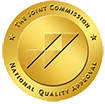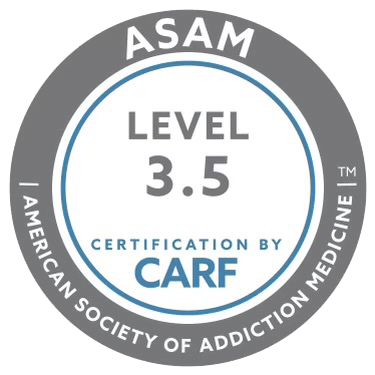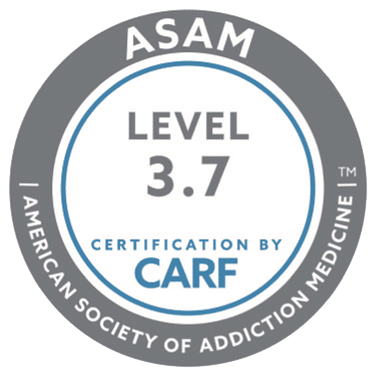Xanax (alprazolam) is one of the most commonly prescribed benzodiazepines in the United States. The drug is primarily used to treat anxiety disorders, panic attacks, and insomnia.
While effective for short-term relief, Xanax can quickly lead to dependence even when taken exactly as prescribed. That’s why understanding the signs of Xanax abuse is crucial for early intervention and support.
This article provides a comprehensive guide to recognizing Xanax misuse, its effects on physical and mental health, and available treatment options for those struggling with Xanax dependence.
What Makes Xanax an Addictive Substance?
Xanax enhances the effects of gamma-aminobutyric acid (GABA), a natural chemical in the brain that produces calming effects.
This creates feelings of relaxation and relief from anxiety that can be intensely pleasurable, especially for those suffering from chronic anxiety and panic disorders.
The FDA has classified Xanax as a Schedule IV controlled substance due to its significant potential for misuse and dependence. In fact, the medication comes with boxed warnings—the FDA’s strongest warning—alerting patients and healthcare providers about serious risks.
Those risks include addiction, abuse, physical dependence, and withdrawal reactions.
What makes Xanax particularly prone to misuse, however, is its relatively short half-life. Its effects begin to wear off after just 11 hours, which can lead to withdrawal symptoms appearing quickly between doses.
This rapid cycle of relief followed by withdrawal can drive increased use as people attempt to avoid uncomfortable symptoms. Tolerance to Xanax can develop rapidly as a result, even at lower doses.
The user’s body will then require increasingly higher doses to achieve the same therapeutic effects. A dangerous cycle starts when users may take more than prescribed to manage their symptoms.
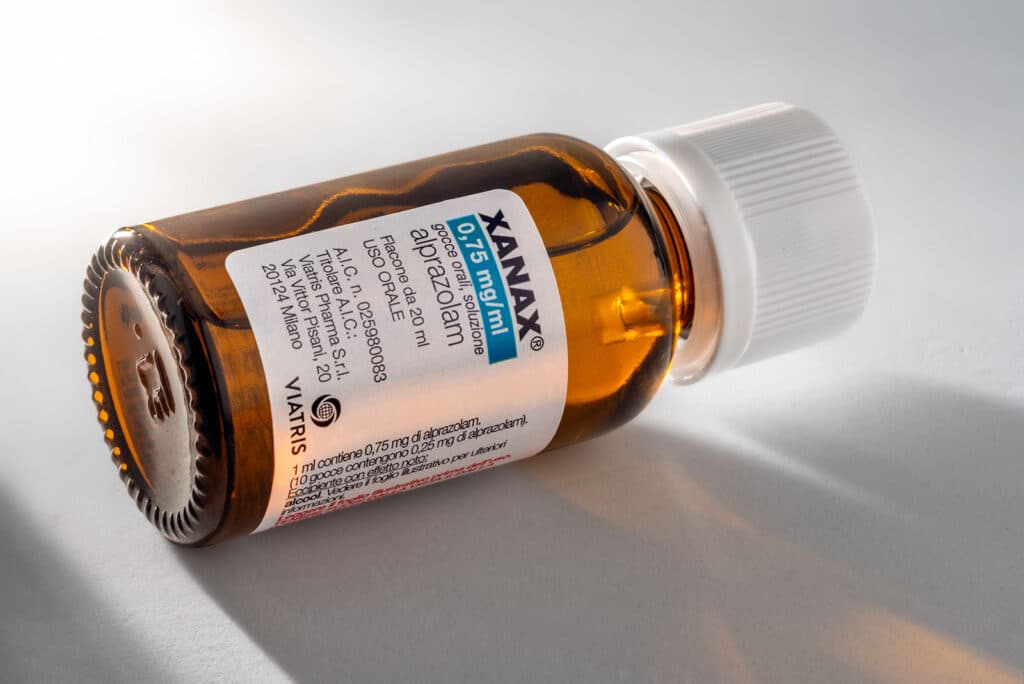
What Are the Early Signs of Xanax Misuse?
Recognizing the early signs of Xanax misuse can help prevent the progression to more serious dependence. Initially, these warning signs might be subtle but tend to become more noticeable as use increases.
One of the earliest indicators is taking Xanax in ways other than prescribed; perhaps using higher doses, taking it more frequently than directed, or continuing use beyond the recommended treatment period.
You might also notice someone “saving up” pills for recreational use or expressing unusual anxiety about running out of their medication.
Doctor shopping (i.e. visiting multiple healthcare providers to obtain additional prescriptions) is another red flag. Someone misusing Xanax might also ask friends or family members for their medications or seek out sources to buy it without a prescription.
Early physical signs, on the other hand, often include persistent drowsiness, slurred speech, and coordination problems that seem disproportionate to the prescribed dosage. Cognitively, you might notice memory problems, difficulty concentrating, or confusion during conversations.
These early signs deserve attention, as Xanax misuse can rapidly progress due to the medication’s highly addictive nature. When several of these indicators appear together, it may be time to have a compassionate conversation about getting help.
What Are the Symptoms of Xanax Abuse?
As Xanax abuse progresses beyond the early warning signs, more pronounced and concerning symptoms emerge that impact multiple aspects of a person’s health and well-being.
These symptoms typically intensify over time as dependence deepens. They often develop into what healthcare professionals classify as a sedative use disorder.
Note: The symptoms of Xanax abuse often extend beyond occasional misuse to more consistent patterns that significantly impair daily functioning. When someone has crossed into problematic use, they often experience intense cravings and find themselves unable to cut back despite wanting to do so.
If anything, a Xanax abuser may continue using even when the drug causes or worsens personal problems. In doing so, they put both their health and relationships at risk. Let’s see how:
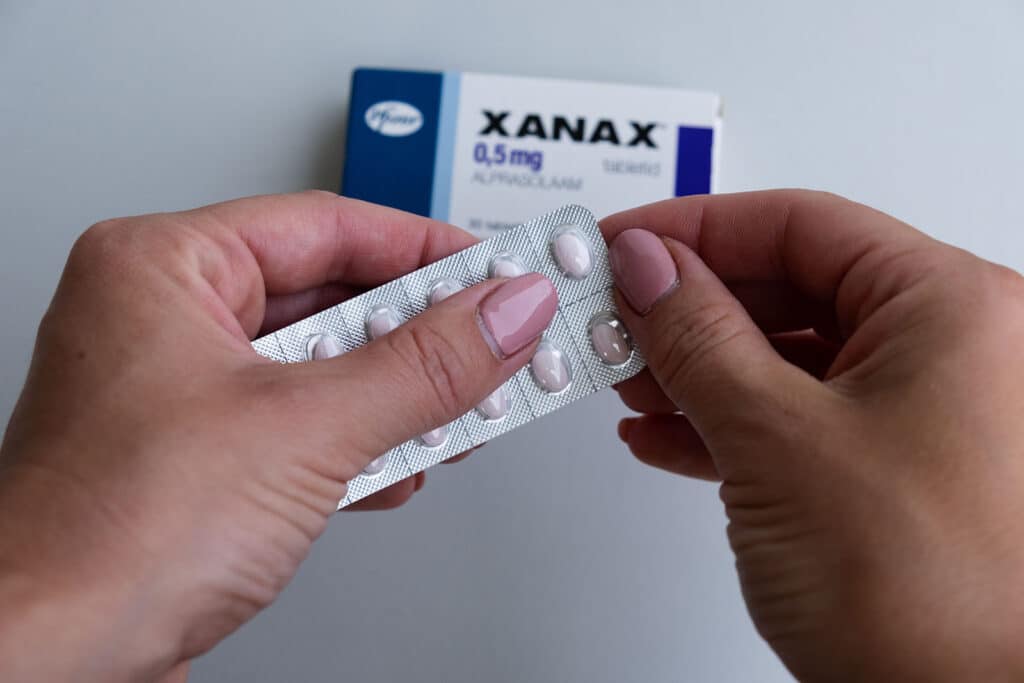
Physical Side Effects of Xanax Abuse
- Extreme sedation: Profound drowsiness and fatigue that interfere with basic activities and responsibilities
- Impaired coordination: Stumbling, falling, or appearing intoxicated without alcohol consumption
- Speech difficulties: Noticeable slurring or incoherent communication
- Respiratory issues: Slower, shallower breathing patterns that can become dangerous at higher doses
- Vertigo and dizziness: Persistent feelings of spinning or imbalance
- Nausea and vomiting: Gastrointestinal distress, especially when doses are increased
- Headaches: Recurring migraines that worsen during withdrawal
- Vision problems: Blurred or double vision
- Low blood pressure: Causing lightheadedness and potential for fainting
- Physical dependence: Withdrawal symptoms like seizures are likely
Psychological Side Effects of Xanax Abuse
- Emotional blunting: Decreased ability to feel or express emotions
- Cognitive impairment: Significant memory problems and confusion
- Paradoxical reactions: Increased anxiety, agitation, or even aggression instead of calm
- Manic episodes: Periods of unusual excitability or hyperactivity
- Depression: Persistent low mood, especially between doses
- Suicidal thoughts: Emerging or worsening suicidal ideation
- Paranoia: Unfounded suspicions about others or surroundings
- Hallucinations: Visual or auditory hallucinations not based on reality
- Dissociation: Feeling detached from oneself or surroundings
- Rebound anxiety: Anxiety symptoms that return more intensely when the drug wears off
What Does a Xanax Addiction Look Like?
When Xanax use progresses to addiction, a person’s entire life becomes organized around obtaining and using the medication. Unlike occasional misuse, addiction represents a chronic pattern where the central nervous system has adapted to require Xanax for normal functioning.
This level of dependence typically involves both a physical need for the substance and psychological reliance that affects behavior and social interactions.
So, someone with a Xanax addiction may find themselves completely unable to stop using despite serious consequences to their health, relationships, and livelihood. They may experience withdrawal symptoms within hours of their last dose.
Below, we look at how compulsive use patterns can create a destructive cycle that’s difficult to break without professional help.

Behavioral Signs
- Preoccupation with supply: Constantly counting pills, worrying about running out, or planning how to get more
- Risky behaviors: Taking dangerous actions like driving while under the influence of Xanax
- Financial problems: Spending excessive money on Xanax, possibly resorting to borrowing or stealing
- Neglecting responsibilities: Failing to fulfill obligations at work, school, or home
- Loss of control: Taking more Xanax than intended or for longer periods than planned
- Failed attempts to quit: Multiple unsuccessful efforts to cut down or stop using
- Secretive behavior: Hiding pill bottles, lying about use, or being defensive when questioned
- Doctor shopping: Visiting multiple healthcare providers to obtain additional prescriptions
- Legal issues: Getting into trouble with the law due to drug-seeking behaviors or impaired judgment
Social Signs
- Relationship deterioration: Conflicts with family, friends, or partners over drug use
- Social withdrawal: Pulling away from previously enjoyed activities and social circles
- New social groups: Associating primarily with others who use substances
- Isolation: Spending increasing amounts of time alone to use Xanax without scrutiny
- Declining performance: Reduced productivity at work or dropping grades in school
- Defensiveness: Becoming irritable or angry when others express concerns
- Loss of interest: Abandoning hobbies and activities that were once important
- Personality changes: Behaving in ways that seem out of character to loved ones
- Making excuses: Consistently justifying continued use despite negative consequences
- Prioritizing use: Choosing Xanax over important events, relationships, or opportunities
What Are the Common Treatments Available for Xanax Abuse?
Recovering from Xanax abuse typically requires a comprehensive treatment approach that addresses both the physical dependence and psychological aspects of misuse.
Note: Because Xanax affects the central nervous system so significantly, treatment must be handled professionally to ensure safety.
Medical Detox
Medical detoxification is the first step in treating Xanax abuse. This process involves gradually tapering off Xanax under medical supervision rather than stopping abruptly, which can cause dangerous withdrawal symptoms including seizures.
During detox, healthcare providers create personalized tapering schedules that slowly reduce the dosage over weeks or months. Vital signs and withdrawal symptoms are closely monitored throughout the process.
Detox typically occurs in a hospital or treatment center where emergency care is readily available if needed.
Medication-Assisted Treatment
During detox and beyond, healthcare providers may use certain medications to help manage withdrawal symptoms and reduce discomfort. They might use:
- Longer-acting benzodiazepines: Medications like diazepam (Valium) or clonazepam (Klonopin) may be substituted temporarily because their longer half-life makes withdrawal smoother
- Anticonvulsants: Drugs like gabapentin might be prescribed to prevent seizures during withdrawal
- Symptom management: Additional medication may be used to address specific withdrawal symptoms like insomnia or anxiety
Behavioral Therapy
Psychological support is important for long-term recovery from Xanax abuse. Your assigned therapist might opt for Cognitive Behavioral Therapy (CBT). This form of therapy helps identify triggers and develop coping mechanisms to manage anxiety without medication.
There’s also contingency management, which provides tangible rewards for positive behaviors and maintaining sobriety.

Comprehensive Addiction Treatment Programs
Depending on the severity of Xanax abuse and individual health conditions, treatment may be delivered through:
- Inpatient rehabilitation: Intensive residential programs providing 24/7 care and structure
- Outpatient treatment: Regular therapy sessions while living at home
- Partial hospitalization programs: Structured treatment during the day while returning home at night
- Dual diagnosis treatment: Specialized care for co-occurring mental health disorders alongside substance abuse.
Get Your Life Back on Track Today
At Recreate Behavioral Health Network, we specialize in helping people overcome benzodiazepine dependence with compassionate, evidence-based care. Our treatment professionals understand the unique challenges of Xanax withdrawal and recovery; many of us have walked the path ourselves.
Call our 24/7 confidential treatment helpline to speak with a caring professional who understands what you’re going through.






